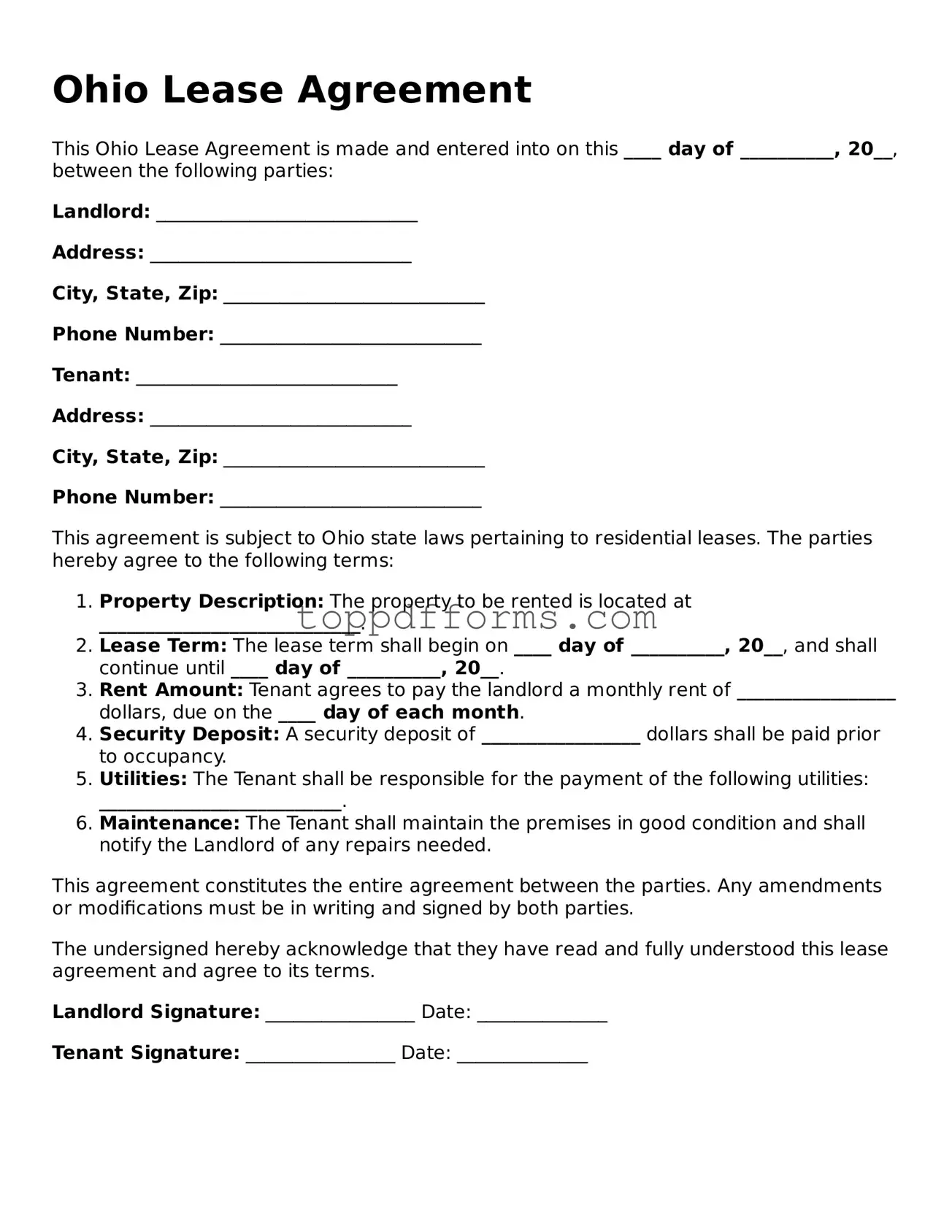What is an Ohio Lease Agreement?
An Ohio Lease Agreement is a legally binding document between a landlord and a tenant that outlines the terms and conditions of renting a residential property. This agreement specifies details such as the rental amount, payment due dates, lease duration, and responsibilities of both parties. It serves to protect the rights of both the landlord and the tenant, ensuring clarity and mutual understanding throughout the rental period.
What are the key components of an Ohio Lease Agreement?
Key components of an Ohio Lease Agreement include the names of the landlord and tenant, property address, lease term (whether it is month-to-month or for a fixed duration), rental amount, security deposit details, and maintenance responsibilities. Additionally, it may include clauses related to late fees, pet policies, and termination procedures. Each of these elements plays a crucial role in establishing expectations and responsibilities for both parties.
How long is an Ohio Lease Agreement typically valid?
The duration of an Ohio Lease Agreement can vary significantly. Some agreements are month-to-month, allowing flexibility for both the landlord and tenant. Others may be fixed-term leases, commonly lasting for one year. It's important for both parties to clearly understand the lease term specified in the agreement, as this determines when the lease can be renewed or terminated.
Can a tenant make changes to the Ohio Lease Agreement?
Generally, tenants cannot unilaterally make changes to the Ohio Lease Agreement. Any modifications to the lease must be agreed upon by both the landlord and tenant and documented in writing. This ensures that both parties are aware of the changes and can avoid potential disputes in the future. Open communication is key when discussing any desired adjustments.
What happens if a tenant breaks the lease in Ohio?
If a tenant breaks the lease in Ohio, they may face legal and financial consequences. The landlord has the right to seek damages, which can include unpaid rent and costs related to re-renting the property. However, Ohio law also requires landlords to make reasonable efforts to mitigate damages, such as finding a new tenant as quickly as possible. It's advisable for tenants to review the lease terms and consult with a legal professional if they are considering breaking the lease.
